Look out almost any window in suburban Westchester County, and chances are you can see an Eastern White Pine (Pinus strobus). This iconic evergreen is profoundly connected to the early history of the United States.
In 1605, English explorers sailing along the eastern coast of North America spied a solution to one of England’s most pressing problems: the lack of suitable trees for ships’ masts. Here, they saw seemingly infinite forests coming right up to the shoreline. And towering above the oaks, maples, beech, and birch trees were countless magnificent pines, so tall and straight that the explorers soon started calling them “mast trees.”
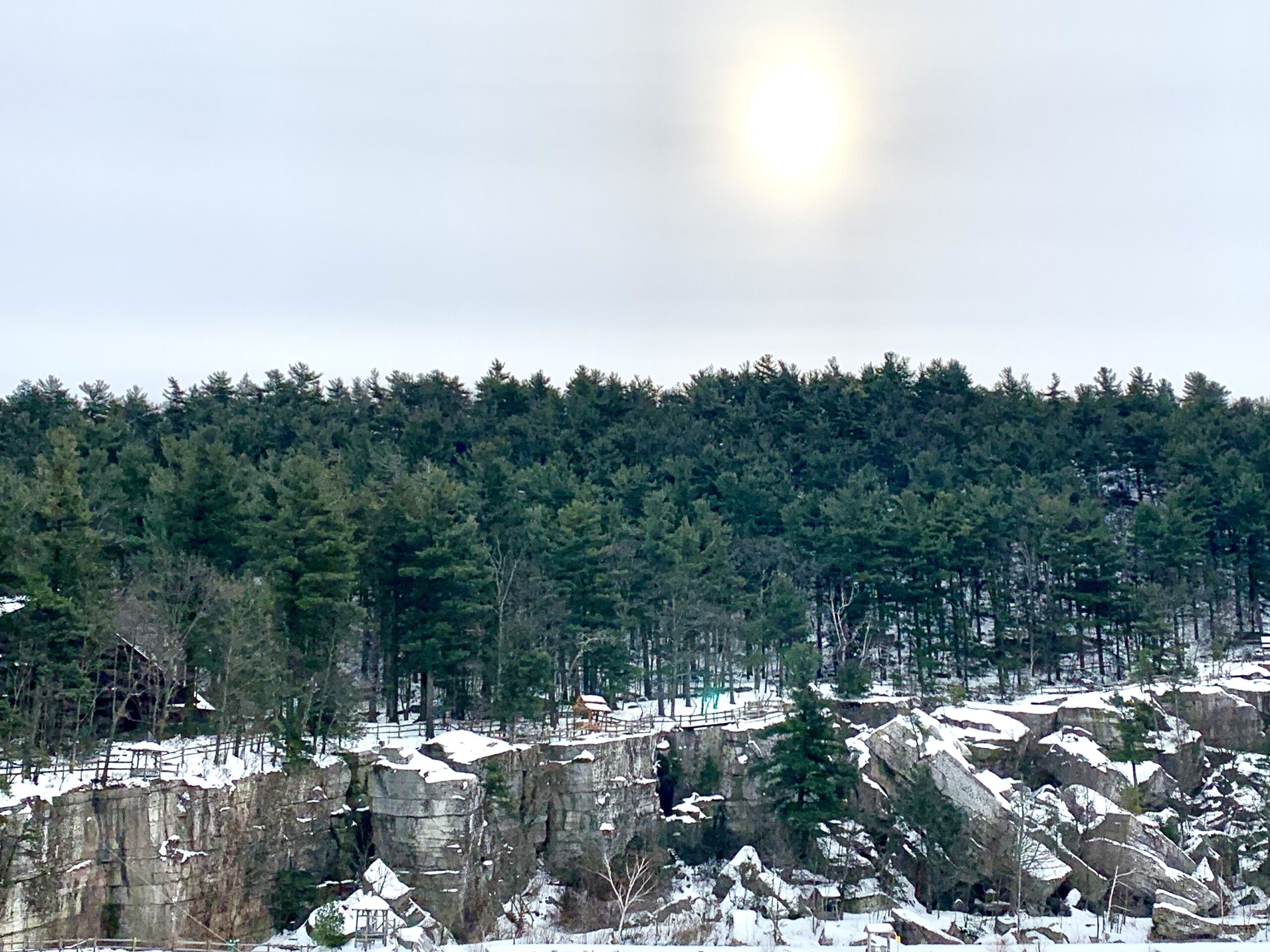
England’s power in the 17th and 18th centuries depended largely upon the British Royal Navy. Warships needed enormous wooden masts, at least 3 feet in diameter and over 100 feet tall. England had long since been cleared of trees that size, giving France, Spain, and the Dutch a critical advantage in shipbuilding. The Royal Navy was forced to negotiate with Norway and the Baltics for timber, but the biggest trees available were no more than 27 inches in diameter and not close to the necessary height. Masts had to be pieced together, creating vulnerabilities in bad weather and warfare.
The Eastern White Pine grows tall and straight, reaching 130 feet or more. It is strong, but able to bend without snapping in stormy winds. It drops its lower branches as it matures, creating a smooth expanse ready for milling. Whole forests made of enormous “mast trees” were a shipbuilder’s paradise, and the Eastern White Pine became a major factor in England’s decision to colonize North America.
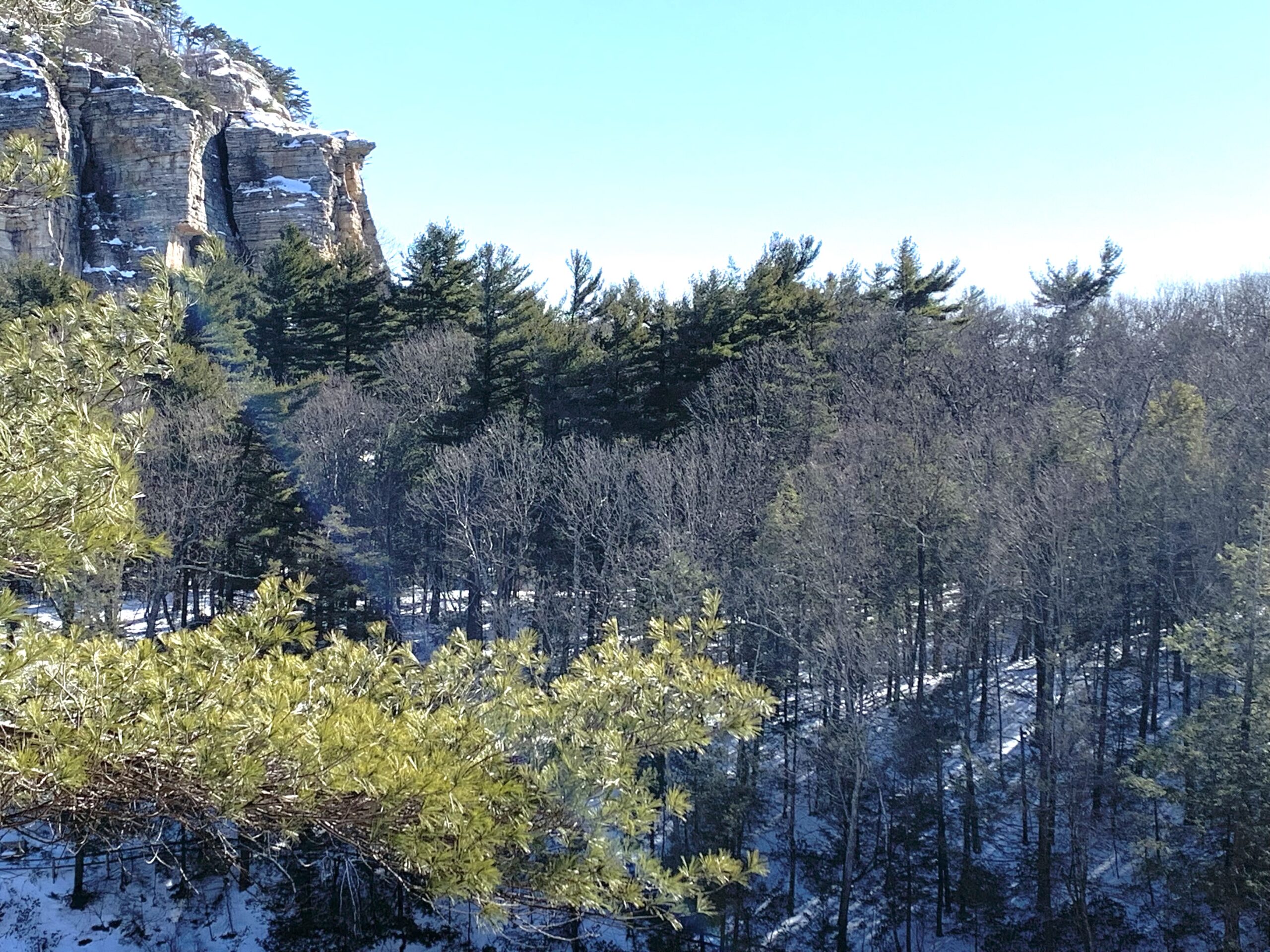
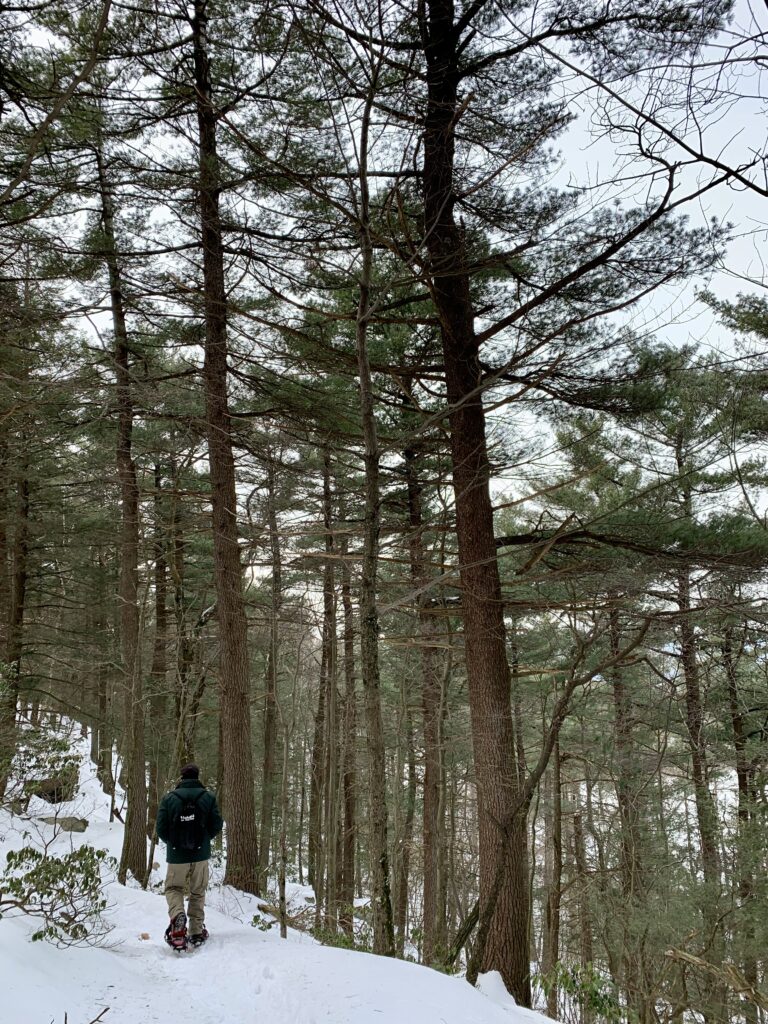
As colonists expanded settlements in Massachusetts, New Hampshire, and Maine, it didn’t take them long to recognize that Eastern White Pine was extremely useful for building everything. The Royal Navy wanted to protect its supply of mast trees, so England declared that all White Pines with a diameter of 24 inches or more were property of the King. Penalties were assessed for cutting the King’s pines, and fines were collected by surveyors appointed by the Crown — until one night in 1771 in Weare, New Hampshire.
Outraged at being fined for cutting trees on their own land, a group of “traitorous rebels,” colonists disguised with ash on their faces, dragged two British enforcement officers out of their beds, beat them with pine branch switches, tied them backwards onto their horses, and drove them out of town. It is thought that this act of rebellion, known as the “Pine Tree Riot,” was inspiration for the Boston Tea Party not long after. Both before and after the Revolution, White Pine was critical to the economy and development of America.
Today, this magnificent tree deserves our admiration for its beauty and its value to the ecosystem. Because of its vast height, it is a favorite nesting tree for bald eagles and hawks. Song birds, squirrels, and many other animals depend on the seeds in its pinecones. Its soft needles host the larvae of a dozen or more species of moths and butterflies.
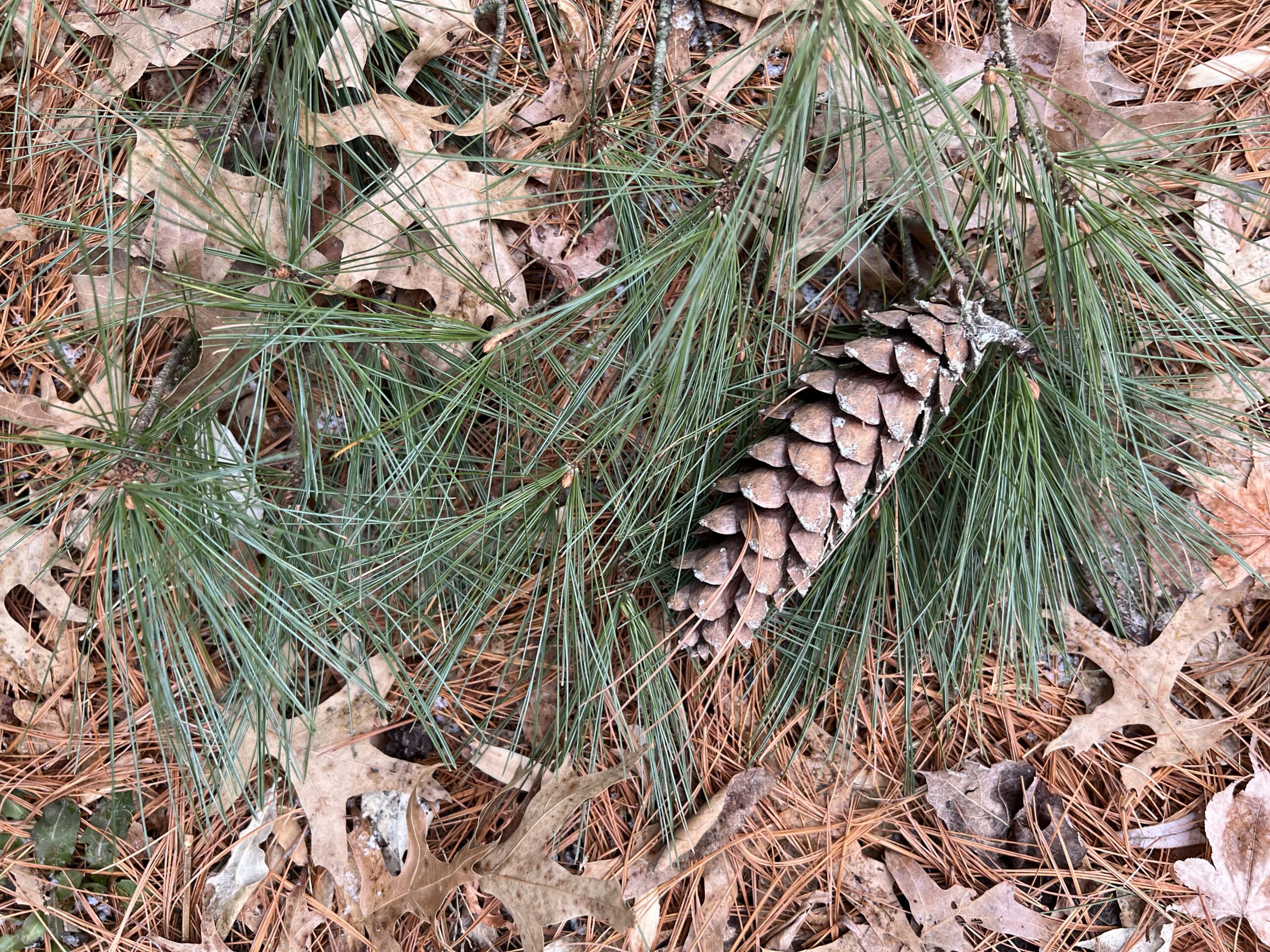
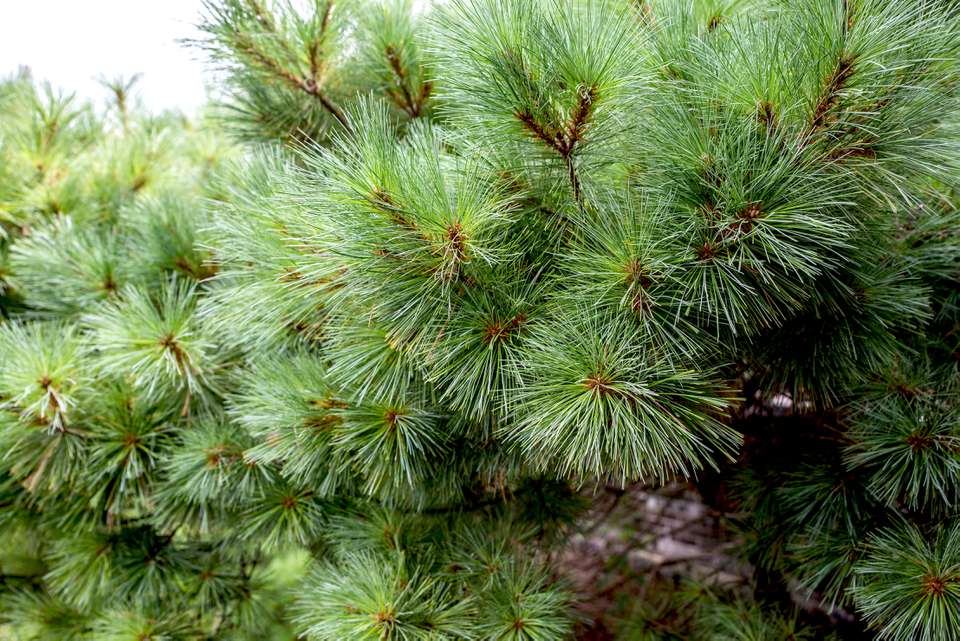
As a landscape plant, Eastern White Pine is a gorgeous evergreen that smells divine and needs no special care. Though it is fast-growing, it can live to be hundreds of years old, so it needs some space. An arborist friend says White Pines are “self-pruning” because they drop branches as they mature. And those branches can be very heavy. It’s not a good idea to plant a White Pine too close to your house or other structures. Plant it where you can see its whole, unique shape from a window, and enjoy the fuzzy look of its needles.
It’s also not a good idea to plant White Pines as a property-line screen. It may be tempting to plant rows of young pines for that purpose, but remember — they grow up to be “mast trees!”
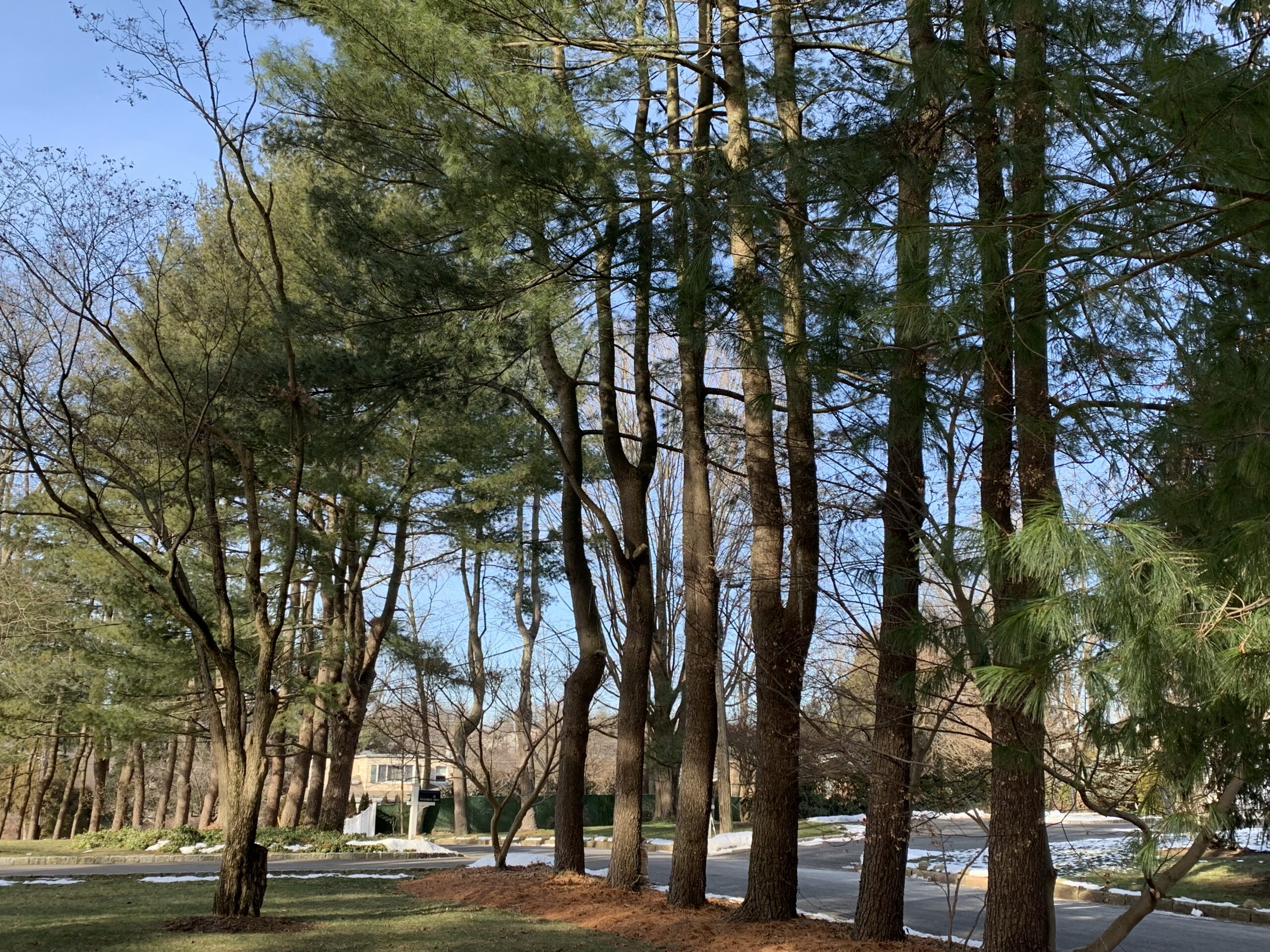
The Eastern White Pine is an iconic plant with a fascinating history. We recommend a book, White Pine: American History and the Tree That Made a Nation by Andrew Vietze for more information. And we also recommend planting Eastern White Pine if you have the chance.
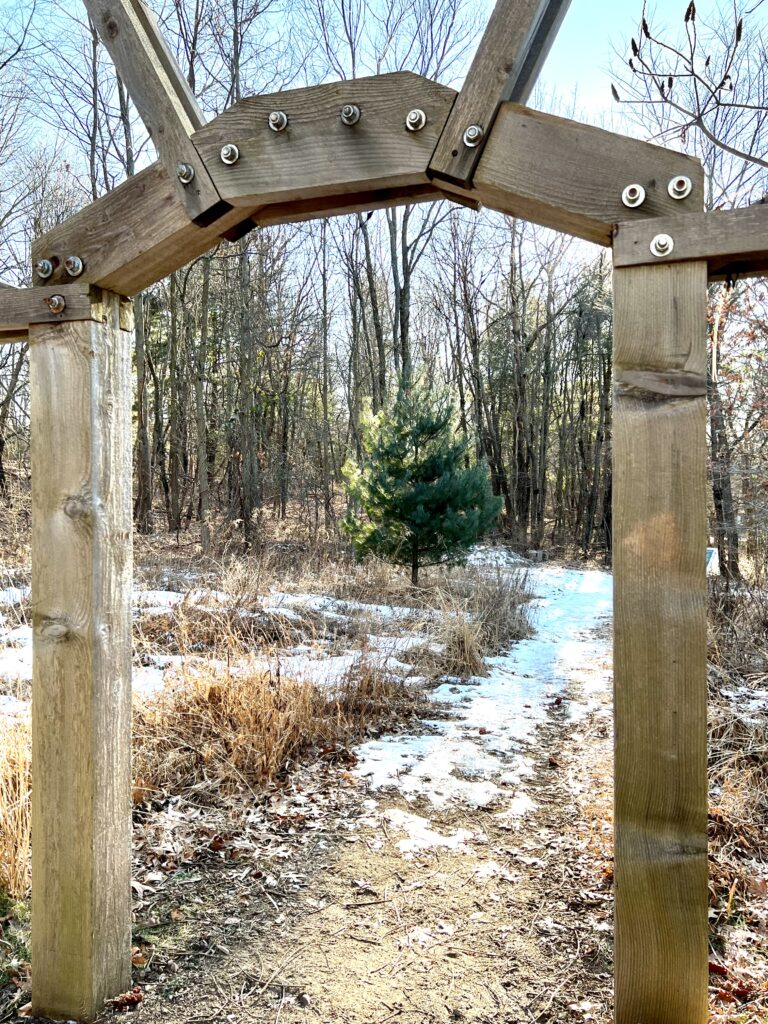
This blog is authored weekly by Cathy Ludden, conservationist and native plant educator; and Board Member, Greenburgh Nature Center. Follow Cathy on Instagram for more photos and gardening tips @cathyludden.

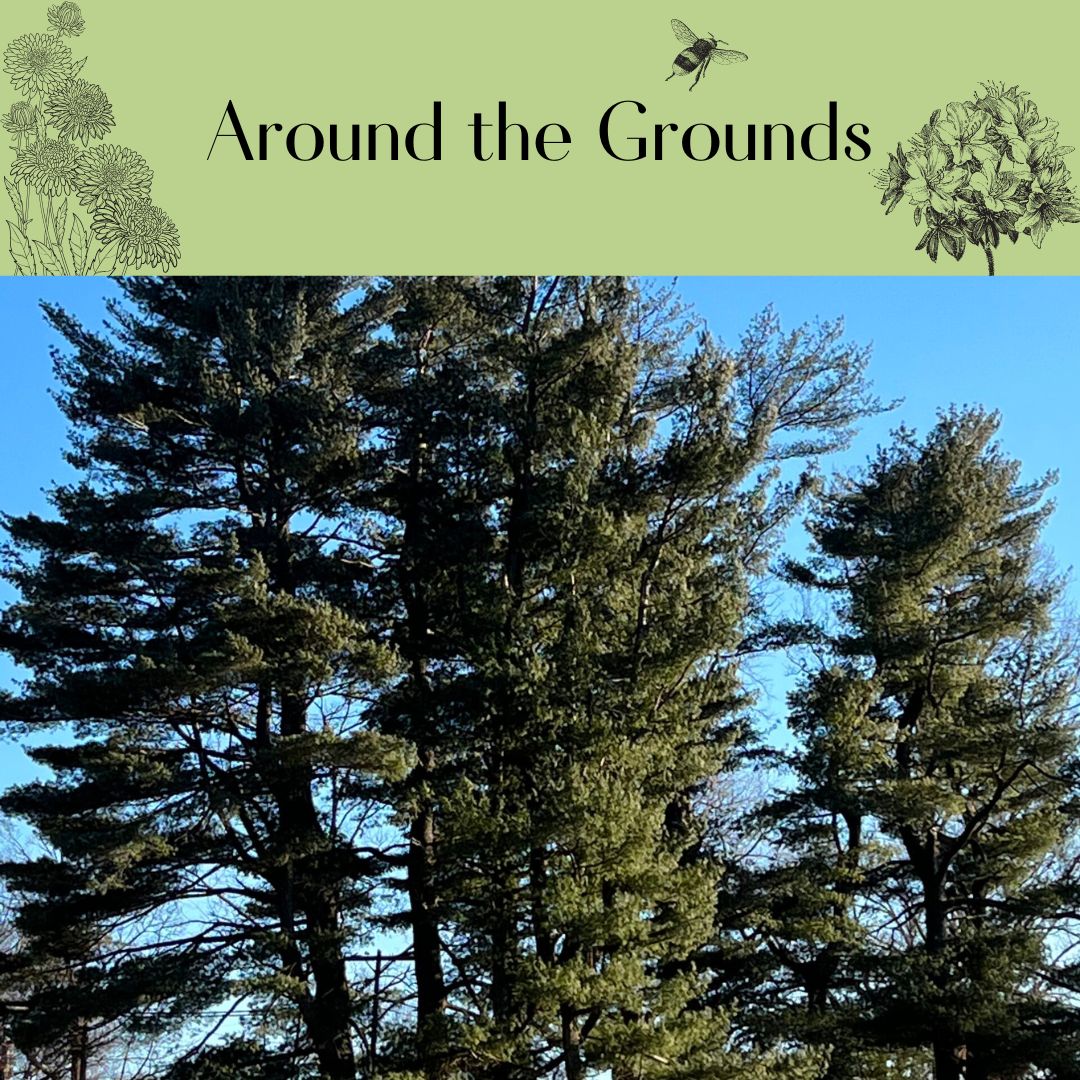
What a great story to tell someone or your kids!
It is, isn’t it! Try to imagine the king of England deciding he owns the trees in your back yard. It would turn you into a rebel in no time!
Cathy (above) Don’t you mean… don’t you wish you could have seen Turtle Island before the colonists started distracting everything they could?
Ironic that the White Pine was used for naval ship masts, when it is a symbol of Peace for the Haudenosaunee. There are few things that sound nicer than wind in a White Pine tree. It is truly heart breaking that there is almost no old growth remaining on this continent.
I agree, Gus. At least the trees we have left are not claimed by a foreign sovereign!
I think you need to go take a look at Maine. There is more Old Growth pine trees there than anywhere else in the lower 48. Take a drive from Bangor to Houlton on Rt1A. Trees upon beautiful trees.
Great idea! Just so happens that I have a fall trip to Maine planned this year!
I loved the Pine Tree Riot piece! I had no idea!
The details of that are a bit rougher than described in the post — 18th Century standards…
Thanks for this……botany and history….a great combo!
Don’t you sometimes wish you could have seen what this whole area looked like back in colonial times? Endless forests with thousands of interesting plant species we rarely, if ever, see today?
What a fun history lesson, especially for a sailor myself.
Another enjoyable and informative blog from Cathy. This one melds my two favorite subjects – American history and environmentalism! Well done.
I had no idea of it’s history. It’s good to know!
Fascinating history, well told!